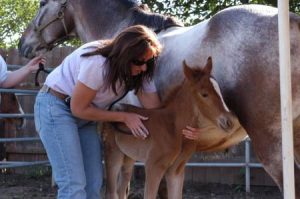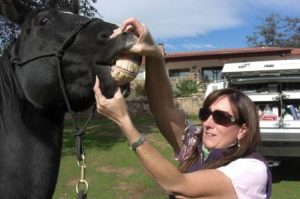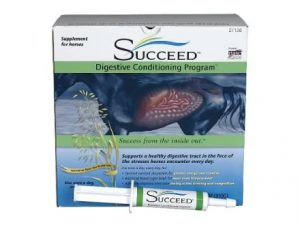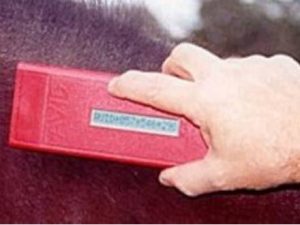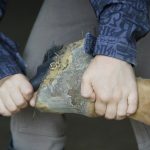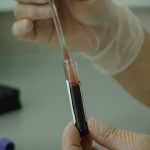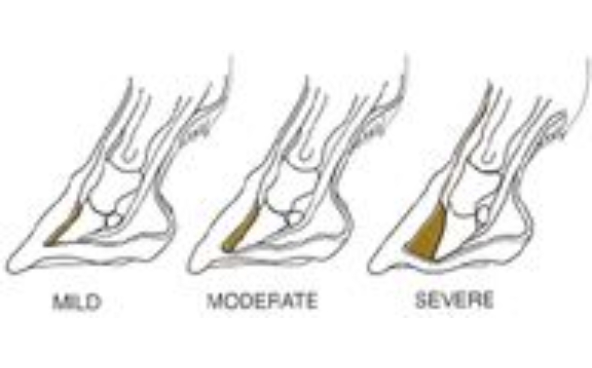
Laminitis (founder) is a painful condition characterized by inflammation of the blood vessel-filled laminae holding the coffin bone to the inside of the hoof. The term laminitis is used more to describe the sudden onset of laminar inflammation, while the term founder is more commonly applied to long-standing laminitis. Laminitis is not usually seen in foals under 6 months of age. The more severe the laminitis is at its onset, the greater the chance for chronic problems and recurrence.
In normal horses, 2 forces influence the position of the coffin bone within the hoof: the downward push of the horse's weight and the upward pull of the deep flexor tendon as it attaches to the sole surface of the coffin bone. In horses with laminitis, when the downward force is greater than the upward pull of the flexor tendon, the coffin bone "sinks" in the hoof capsule. More commonly, however, inflammation around the coffin bone helps to push the toe down while the deep flexor tendon pulls the toe down and backward, causing coffin bone "rotation." At the same time, inflammation of the laminae causes swelling, increasing the pressure within the rigid hoof. This increased pressure damages the blood vessels of the laminae.
Laminitis can occur with no apparent cause, but often there is some underlying cause. The underlying condition can often be cured, but the laminitis may persist, leaving the horse with chronic (long-term) founder. If not a cause for euthanasia, chronic founder requires special attention for the rest of the horse's life.
The following factors contribute to the onset of laminitis:
- Imbalance of exercise to food intake. A fit (lean) athletic horse that is worked harder than usual on a hard surface can develop "road founder." A cresty-necked pony or horse with a genetic propensity for being overweight, that eats too much spring pasture, or that eats too much grain can develop laminitis.
- Endotoxins from illness. Certain bacteria can produce endotoxins, which damage the laminar blood vessels. Endotoxins can be produced in such diseases as severe colic, uterine infections, diarrhea and pneumonia, and with complications after foaling.
- Cortisone release or use. Stress causes the adrenal glands to release cortisone. This stress can be acute (over a few days) or chronic (over several weeks or more).Stressful situations for your horse may include training, competition and shipping. Any cortisone type of drug, such as dexamethasone or triamcinolone, should be used only under veterinary direction and given only to horses in exercise. In treatment of certain immunologic diseases, cortisone is potentially life saving, but the large doses necessary may cause laminitis. Older horses (usually over 20 years) with a pituitary tumor tend to develop laminitis from increased production of cortisone.
- Conformation or genetic predisposition. Heavy horses or ponies are more likely to develop laminitis. Also, horses with thin or flat soles do not have as much protection of the coffin bone.
- Heat in the feet.
- Increased digital pulse.
- Pain on application of hoof testers near the point of the frog.
- Sinking or rotation of the coffin bone on x-rays.
- Reluctance to walk or trot.
- Depressed coronet.
- Radiographs (x-rays): Radiographs of the affected feet can evaluate the position of the coffin bone. Repeated radiographs can help detect any sinking or rotation.
- Medication: It is important to give medication as prescribed. Though your horse may appear more comfortable after treatment has begun, it takes considerable time to reduce inflammation in the foot. Laminitis commonly recurs, especially if the horse is not medicated .
- Foot protection: Keep your horse on a soft surface until this episode of laminitis is completely resolved. Increase the thickness of its regular bedding, and add sand to its paddock. Provide support for the frog, as with Lily Pads. When applying frog support, do not place tape on or over the coronet. This will decrease an already compromised blood supply to the foot. Check the position of the frog support several times daily to make sure it is in its proper position.
- Diet: Feed your horse only enough to maintain its body weight. Do not overfeed, and monitor its body weight to prevent weight gain.
- Exercise: Exercise your horse as follows. Follow these recommendations closely, as overworking your horse can lead to recurrence of laminitis. The most important way to prevent laminitis is to avoid stressful situations and hoof trauma.
- Don't remove the shoes when your horse is sick or being shipped.
- Bed your horse on sole-supporting bedding, such as thick shavings.
- When stress is the suspected cause, provide frog support, such as with Lily Pads.
- Do not apply tape around the coronet.
- Don't allow your horse to walk on gravel or rocky surfaces.
- Carefully monitor your horse's intake of carbohydrates.
- Allow your horse to exercise each day.
- Have your horse shod regularly and avoid trimming the feet too closely.
If you have any questions or concerns about Laminitis all us at 619-659-1180.


